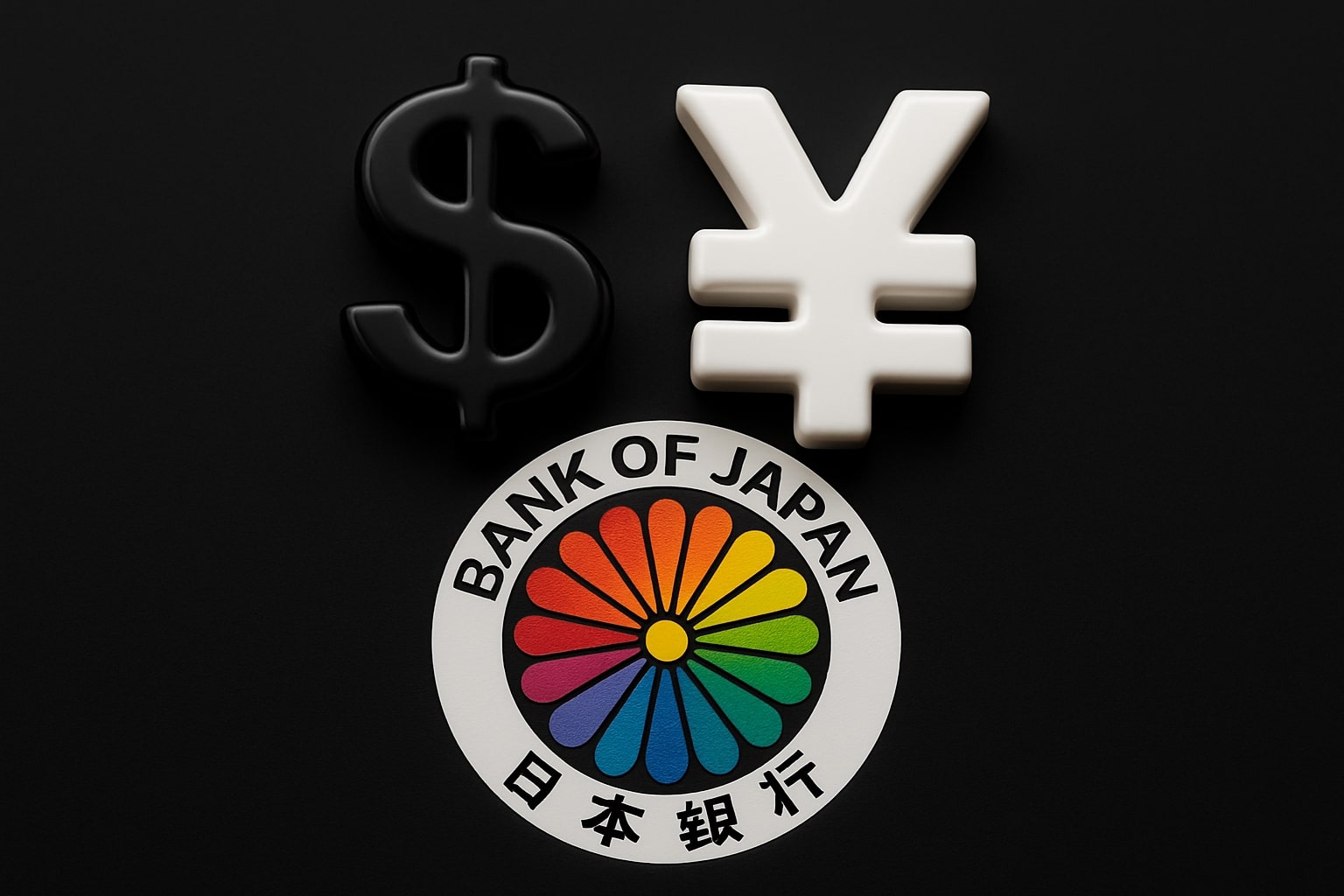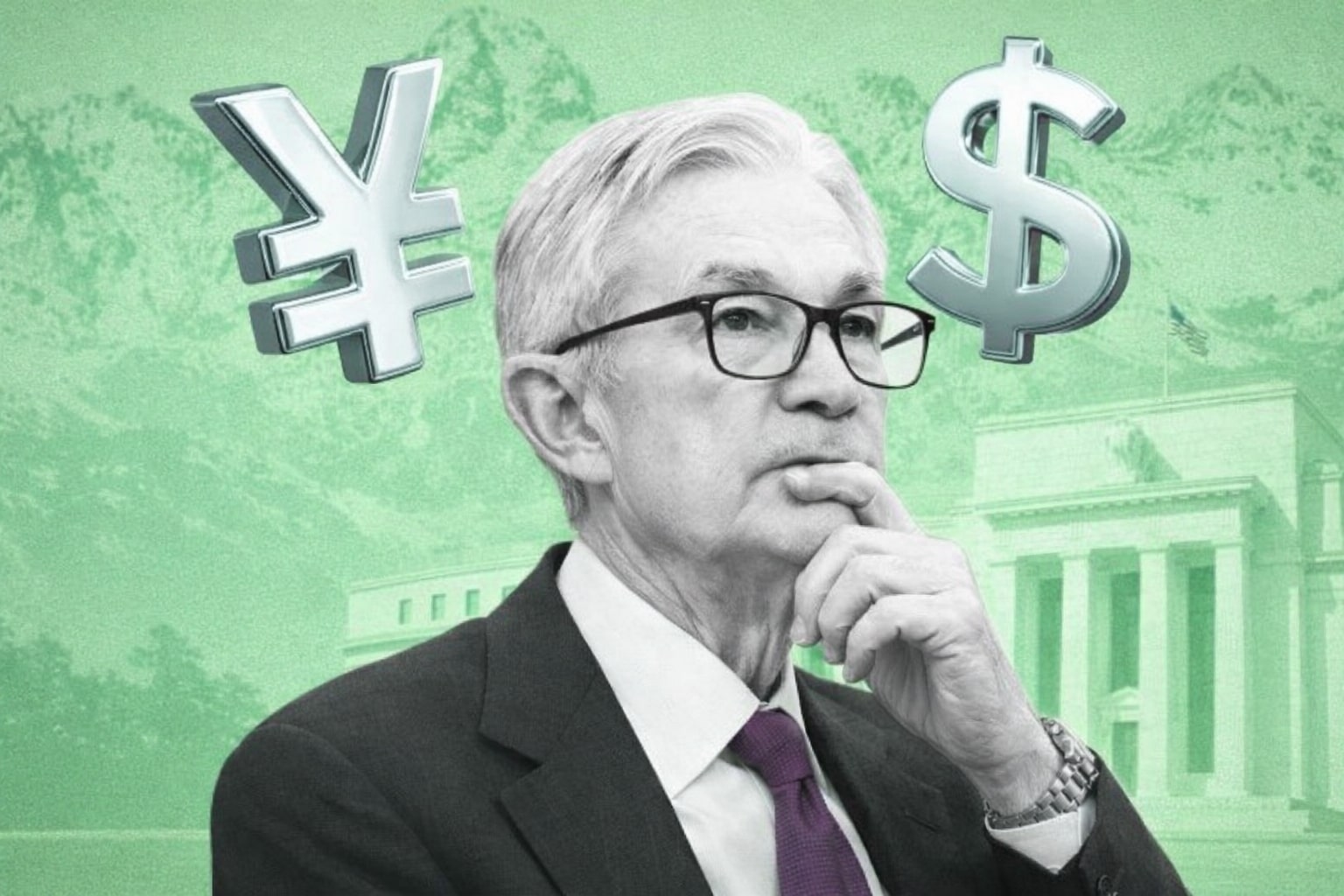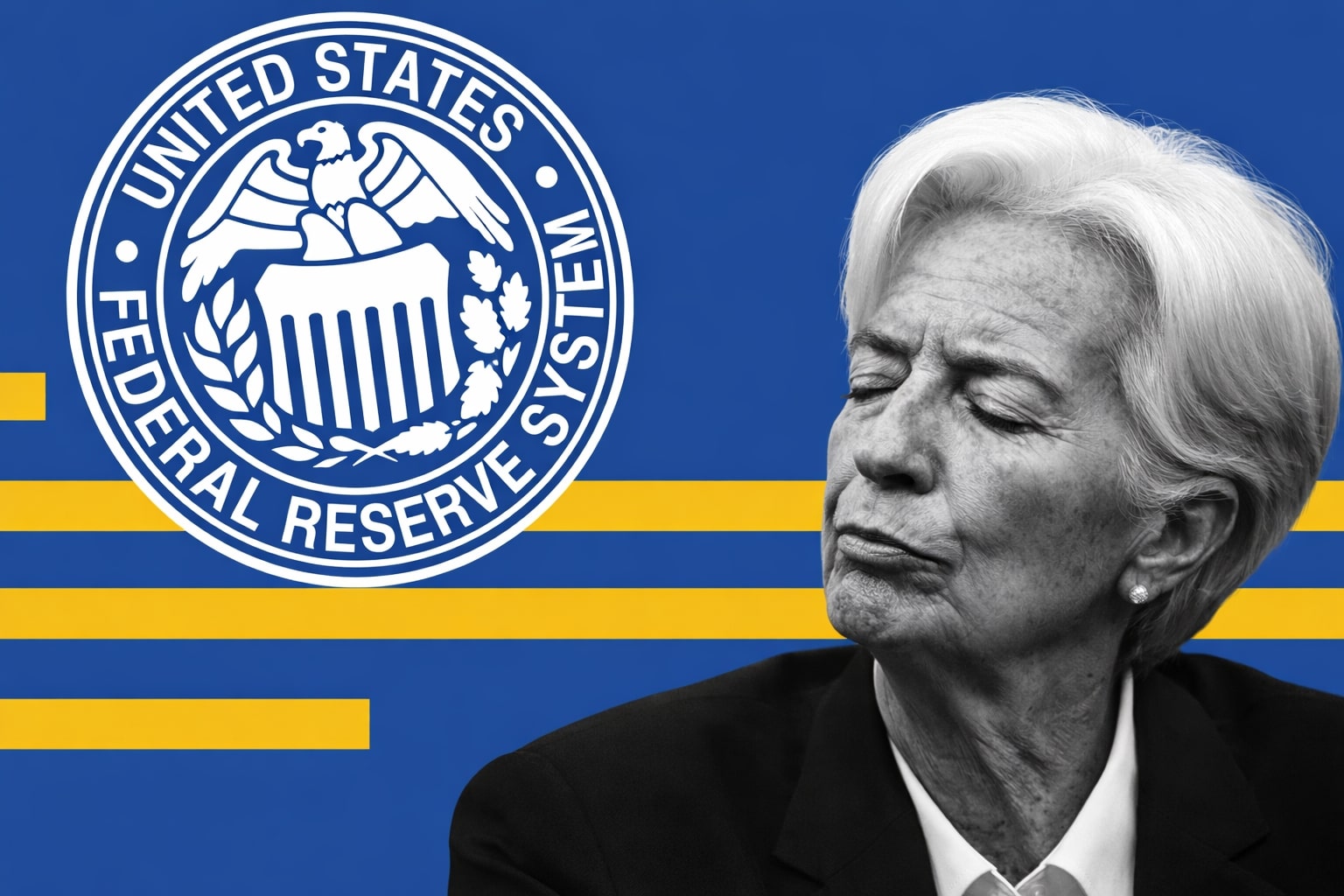USD/JPY (USDJPY) Holds Above 150.60 as Traders Weigh Fed Cuts, Japan Leadership Vote, and Trump’s China Shift
The USD/JPY pair is trading near 150.65, recovering from last week’s low at 149.38, as shifting U.S. rate expectations, Japan’s upcoming political transition, and renewed optimism in U.S.-China relations converge to shape one of the most critical moments for the yen in 2025. The recovery follows a volatile week marked by rising global uncertainty, a partial U.S. government shutdown, and a sudden softening of trade rhetoric by Donald Trump, which stabilized risk sentiment and boosted the dollar’s demand.
Dollar Finds Support as Fed Rate-Cut Bets Settle
The U.S. dollar has regained footing after markets priced in roughly 50 basis points of cumulative rate cuts by the Federal Reserve through December, according to LSEG data. Despite the dollar index (DXY) dropping to 98.00, the greenback rebounded modestly on Friday, gaining 0.26%, as traders shifted focus to the upcoming U.S. Consumer Price Index (CPI) release, now scheduled for October 24 after delays caused by the government shutdown.
Expectations call for core CPI to rise 0.3% month-over-month, with headline inflation increasing 0.4%, maintaining the Fed’s cautious tone heading into the October 29 FOMC meeting. Fed Fund Futures show markets fully pricing two quarter-point cuts, but several policymakers — including St. Louis Fed President Alberto Musalem — warned that policy room is limited before easing becomes overly accommodative. The market’s reaction to CPI will be crucial: a softer reading could anchor USD/JPY above 150.00, while a surprise upside print risks reigniting hawkish repricing.
Japanese Political Crossroads and BoJ Caution
Japan’s domestic focus remains on the October 21 parliamentary vote, which could usher Sanae Takaichi into office as Japan’s first female prime minister. Her policy stance — widely seen as more dovish and market-friendly than that of Shigeru Ishiba — has contributed to the yen’s weakness, as investors expect continued fiscal stimulus and no aggressive intervention against yen depreciation.
Meanwhile, Bank of Japan (BoJ) Governor Kazuo Ueda continues to urge patience, citing the need for more data before any policy shift. The BoJ is likely to keep rates unchanged at its October 30 meeting, even as core inflation hits 2.9% YoY, up from 2.7% in August. The policy gap between Japan’s near-zero yields and U.S. rates above 5% remains a dominant driver of USD/JPY strength, anchoring the pair above the 150.00 threshold despite occasional pullbacks.
Trump’s Softer China Tone Revives Risk Appetite
Risk sentiment improved markedly after Trump commented that 100% tariffs on Chinese imports are “not sustainable,” confirming a planned meeting with Xi Jinping at the upcoming APEC Summit in South Korea. This pivot away from hardline trade rhetoric lifted U.S. equities and risk assets, reversing safe-haven flows that had briefly favored the yen earlier in the week. The result was a surge in demand for the dollar, pushing USD/JPY from its Asian session low of 149.38 toward 150.50, with momentum extending through European hours.
The easing of trade tensions also dampened implied volatility in the forex market, making USD/JPY options cheaper. Traders are increasingly turning to straddle strategies around the 150.50 strike, betting on a volatility spike driven by the combination of the Fed’s October decision and the APEC meeting in November. With geopolitical developments intertwined with monetary expectations, short-term positioning now favors tactical dollar strength, though intervention risks persist.
Yield Spreads, Volatility Correlations, and Technical Signals
The USD/JPY maintains a strong inverse correlation of 0.73 with Fed Funds futures pricing out to 2026, highlighting the dominance of interest rate differentials over other drivers. The yen’s rebound last week was largely linked to a drop in U.S. Treasury yields, but realized and expected volatility in U.S. stock markets also played a pivotal role — registering -0.85 and -0.87 correlations, respectively, with dollar-yen moves. This dynamic suggests that any resurgence in equity volatility could reintroduce yen strength via carry trade unwinding.
On the technical front, USD/JPY has regained footing above 150.00, but faces multiple resistance layers. The first topside test lies at 151.00, followed by 152.40, which served as a pivot area earlier this month. A breakout above 153.28 would mark a decisive extension toward 154.80, while downside supports stand at 149.41, 149.00, and the 200-day moving average near 148.60.
The pair’s weekly chart printed a doji candle, signaling indecision after weeks of directional momentum. The RSI (14) has flattened around neutral, while the MACD is nearing a bearish crossover, hinting at short-term fatigue despite medium-term bullish control. Price action around 150.50–151.00 remains the line in the sand — a close above would restore upside confidence, while renewed volatility could trigger defensive buying of the yen.
Macro Context: Shutdown, Data Gaps, and Global Crosscurrents
The U.S. government shutdown, now in its third week, has delayed major economic reports, leaving markets reliant on private data and expectations. More than two million federal workers remain unpaid, amplifying uncertainty about near-term consumer spending. The delay in CPI data has added to the tension, with select Labor Department staff recalled solely to calculate inflation figures required for the Social Security cost-of-living adjustment.
In global context, the yen’s weakness coincides with broader dollar fatigue against European peers — EUR/USD trades near 1.1655, while GBP/USD holds around 1.3427, both posting weekly gains. The dollar’s safe-haven behavior has softened; it now behaves more like a cyclical currency, rising with improved sentiment and falling during stress. This transition has kept USD/JPY more resilient than most pairs, as it straddles the intersection between policy divergence and global risk tone.
Outlook for USD/JPY: Intervention Watch and Trading Bias
Intervention risk from Japan’s Ministry of Finance remains elevated as USD/JPY hovers above 150.00, recalling the 2022 and 2024 interventions when authorities acted near similar levels. Traders remain cautious that any breach above 152.00 could invite verbal or direct policy defense. However, absent immediate threats, dollar momentum appears intact into late October, especially with rate cuts already priced in and no major surprises expected from the BoJ.
The pair’s near-term bias stays mildly bullish, supported by improving U.S. risk sentiment and steady yield spreads. Yet, with multiple event catalysts — U.S. CPI (Oct 24), Japan’s PM vote (Oct 21), and Fed meeting (Oct 29) — volatility risk remains asymmetric. A dovish Fed or yen-supportive intervention could quickly unwind long USD positions.
Overall, USD/JPY (USDJPY) remains confined between 149.00 and 152.40, with short-term tactical upside but fragile momentum. The current data mix and political narrative favor a Hold stance — opportunistic buyers may find value near 149.00, but sustained gains above 151.50 require confirmation through both policy signals and geopolitical calm.
That's TradingNEWS




















